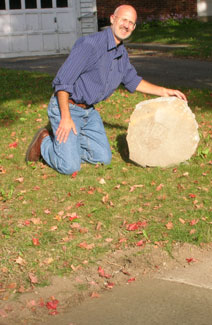Editor’s note: The Ann Arbor city council has held two retreats to discuss the city’s FY 2012 budget – one in early December 2010 and another in early January 2011. A summary of the material covered in those retreats is provided in previous Chronicle coverage: “Ann Arbor: Engaging the FY 2012 Budget.”
Leading up to the city administrator delivering a proposed budget in April – for FY 2012, beginning July 1, 2011 – the city council is also holding a series of work sessions on the budget. Their typical scheduling pattern is for the weeks between council meetings. Previous work sessions have taken place on community services, as well as the 15th District Court and police and fire services. On Feb. 28, the council held its final budget work session of the season – on public services and the city attorney’s office. [.pdf of combined public services budget impact sheets provided on the city of Ann Arbor's budget impact web page.]
Streets, sidewalks, trash collection, trees in the right-of-way, water and sewers are all included under the general label of “public services” in the city. At Monday’s budget work session on those kinds of activities, public services area administrator Sue McCormick did not present the council with any news more dramatic than Roger Fraser did when he announced at the conclusion of the session that he’d be leaving his job by the end of April.
But McCormick did present the council with options for meeting reduction targets that would, if enacted, have a significant impact on the range of services offered by the city. In at least one case, the range of service would expand – the city (instead of adjoining property owners) could assume responsibility for sidewalk repair and replacement.
In another case – which McCormick stressed was not a recommendation, but rather just an informational ballpark amount for potential annual savings to the city ($2.1 million) – the city would get out of the business of trash collection. In another month, the city expects to give the council a report that provides more detail on possible alternatives to having city workers perform that task, including some kind of franchised trash collection operation.
Many of the specific reduction target tactics presented on Monday evening involved assigning costs to a unit outside the general fund. While the city’s total budget includes around $340 million in expenses, the annual discussion typically spotlights the general fund, which gets revenue from the general operations millage [listed on tax bills as CITY OPER] – and is currently levied at a rate of roughly 6 mills. The widely reported projected deficit of $2.4 million for the city’s budget is for the general fund.
During the work session, the assignment of costs to other funds caused Sandi Smith (Ward 1) to wonder if it was just a matter of “shuffling” money from one bucket to another. The answer she heard was: No – it’s a matter of assigning costs appropriately to whatever fund should properly bear the cost of a particular activity.
One of the largest instances of such a cost reassignment would use the stormwater utility fund, instead of the general fund, to pay for forestry operations for trees in the right-of-way. That move would save the city’s general fund around $660,000 a year.
Another example of that kind of “shuffling,” albeit with a smaller dollar figure ($35,000), was a proposal from the city attorney’s office to charge capital projects part of the cost of a paralegal specializing in easements, instead of burdening the city attorney’s budget with that expense. The city attorney’s reduction strategy, which had originally been scheduled for a prior work session, was also part of Monday evening’s presentation. [Full Story]




